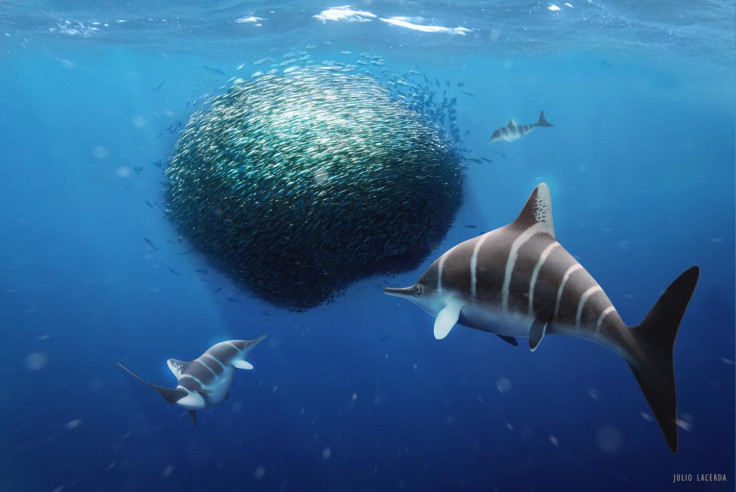Fossil News: Scientists Discover Two Extinct Dinosaur-Era Reptiles Are The Same Marine Animal

Two extinct species of marine reptiles have confused scientists for a long time, but researchers have concluded that the pair, which lived during the time of dinosaurs, is actually the same animal.
Experts reported the realization in the Journal of Systematic Palaeontology, saying it wasn’t so easy to land on because the original fossil specimens of the two creatures were discovered in 1800s England and have long since been lost.
The two reptile species, communis and intermedius, were always part of the same genus: Ichthyosaurus. Paleontologists have debated for decades about whether those two creatures were distinct from each other or were one and the same. The argument for them being different originally hinged on the formation of their teeth, but according to the study, the teeth of the ichthyosaur can vary both throughout the species “as well as within an individual.”
“The early accounts of ichthyosaurs were based on very scrappy, often isolated, remains,” paleontologist and researcher Dean Lomax, from the University of Manchester, said in a statement from journal publisher Taylor & Francis Group. “This resulted in a very poor understanding of the differences between species and thus how to identify them.”
Read: The Devastating Way Evolution Killed the Woolly Mammoth
After poring through fossil evidence and literature, Lomax and his fellow researcher, New York’s Brockport College professor Judy Massare, concluded that the communis and the intermedius are the same species, based on the similarities of their features. The only remaining hitch is in which of those two names the single species should retain moving forward — although the study notes that their new definition of the reptile mostly includes features that were associated with intermedius originally, the name “communis” is not expendable because, as it was discovered a year earlier than its counterpart, it “has been widely used in the literature and is historically significant.” For the sake of avoiding confusion, they propose calling the reptiles I. communis.
Indeed, the species name “has become one of the most well-known and iconic of all the British fossil reptiles,” the publisher notes. “They were the first, large extinct reptiles brought to the attention of the scientific world.”

Despite the name ichthyosaurus, which may seem similar to such famous names as “tyrannosaurus” and “stegosaurus,” the reptiles were not dinosaurs. Encyclopaedia Britannica says they are distant ancestors of both lizards and snakes but looked similar to today’s dolphins. They had a “very wide geographic distribution” and reached their peak during the Triassic and Jurassic periods, which means they swam in large numbers in the period between 145 million years and 251 million years ago. For comparison, modern humans have only been around for a few hundred thousand years.
See also:
DNA Proves the Same Aboriginal People Have Lived in Australia for 50,000 Years
© Copyright IBTimes 2024. All rights reserved.











